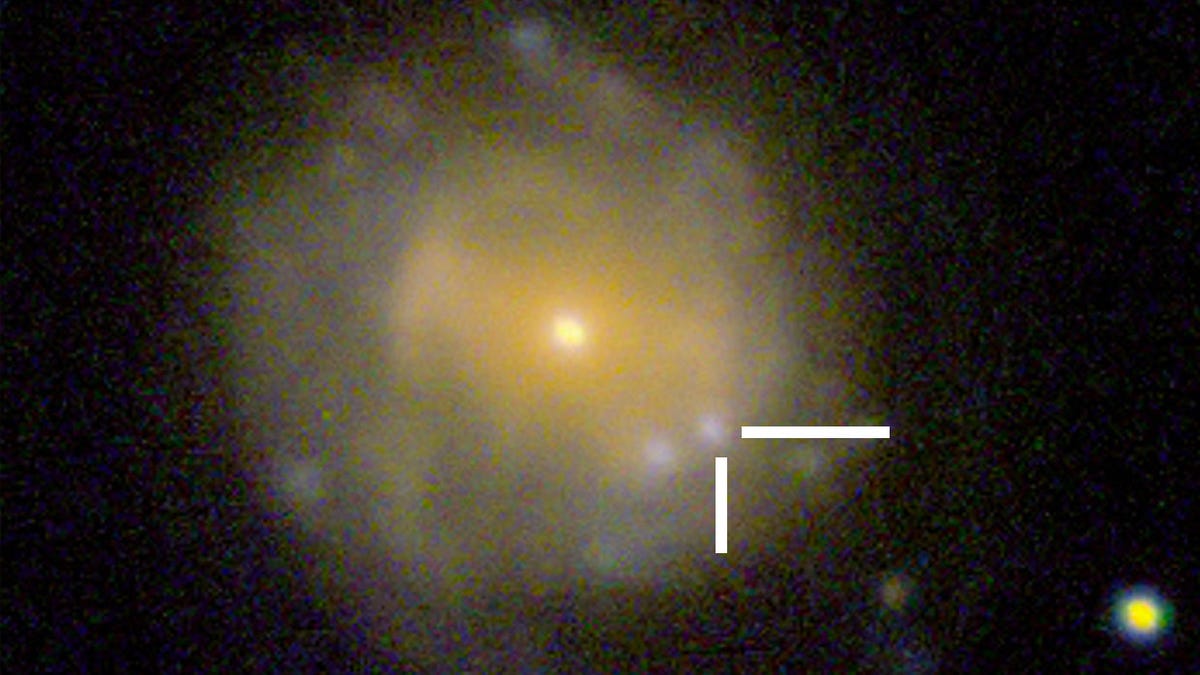Mysterious space 'Cow' explosion could be birth of black hole
The unusual space "Cow" continues to baffle astronomers but two new theories suggest black holes are to blame for the strange explosion.

A strange celestial explosion, nicknamed "The Cow", occurred in a galaxy almost 200 million light years away on June 16, 2018 and it had astronomers udderly bamboozled.
Besides providing journalists with ample opportunities for bovine-based puns, the Cow has largely remained a mystery but two recently-discussed theories may have Sherlocked the startling explosion.
Picked up by the Asteroid Terrestrial-impact Last Alert System (ATLAS) telescopes in Hawaii, the mysterious event was officially named "AT2018cow". Astronomers, always one for a nickname, quickly jumped on "the Cow" as the unofficial moniker. The flash of light produced by the Cow was sudden and about 10 times brighter than expected for an exploding star. Shortly after, it seemingly vanished.
Then, in November 2018, two teams suggested that it may be the birth of a neutron star or a black hole. A second group suggested the event was caused by a huge black hole obliterating a dying star known as a "white dwarf". On Thursday, astronomers from those teams put forth their theories on the Cow's origins during a panel discussion at the 233rd American Astronomical Society.
"We've never seen anything exactly like the Cow, which is very exciting," said Amy Lien, assistant research scientist at the University of Maryland and NASA's Goddard Space Flight Center.
Lien and her team are in the white dwarf camp, believing that the flash of light detected in June occurred when a very dense, Earth-sized star was torn apart by the gravitational force of a black hole. As this white dwarf encroached on the black hole, the huge forces began to rip it apart, turning the star into a stream of gas.
Analyzing data from the Neil Gehrels Swift observatory, a telescope in low-Earth orbit, the team were able to determine that this event didn't fit the typical profile of an exploding star. Observing the ultraviolet light, radio waves and gamma rays from the Cow suggests that a black hole up to 1 million times more massive than our sun was responsible for shredding up the white dwarf. The team's work will be published in the journal Monthly Notices of the Royal Astronomical Society.
The clip below shows how their version of events may have played out.
The other team of researchers, led by Northwestern University's Raffaella Margutti, disagree with the white dwarf theory. They believe the Cow was an exploding star -- a supernova -- that has now led to a never-before-seen cosmic event.
"Further observations of other wavelengths across the spectrum led to our interpretation that 'The Cow' is actually the formation of an accreting black hole or neutron star," Margutti said.
Yes, we may have just played celestial observer to the birth of a brand-new baby black hole. Congratulations, universe.
The reason Margutti and her team believe the explosion was stellar in origin is because of the unusual X-ray observations the saw. Typically, a supernova results in an opaque bubble of debris that prevents astronomers from seeing and investigating what is happening within. But the Cow didn't produce the same amount of cosmic ejecta as is usually seen, which meant Margutti's team were able to dive in to the "engine" of the explosion and poke around.
As a result, the team were also able to study the Cow's profile for its first 100 days, long after the initial light faded. They discovered that it was emitting a slew of radiation and that high-energy X-rays, known as hard X-rays, revealed the Cow was likely a "compact body" such as a black hole consuming material or a neutron star, a type of failed black hole that is incredibly dense and has an extreme gravitational force.
If Margutti's team turns out to be correct, the implications would be enormous, providing a more complete understanding of the birth of compact bodies. As the team continues to track the Cow, they could help us better understand the evolution of these events and their impacts locally and across the universe.
For now, there are two theories and no definite answers but further investigations will muster more knowledge about the Cow and its bright, explosive beginnings.
And that's no bull.
CES 2019: See all of CNET's coverage of the year's biggest tech show.
NASA turns 60: The space agency has taken humanity farther than anyone else, and it has plans to go further.

